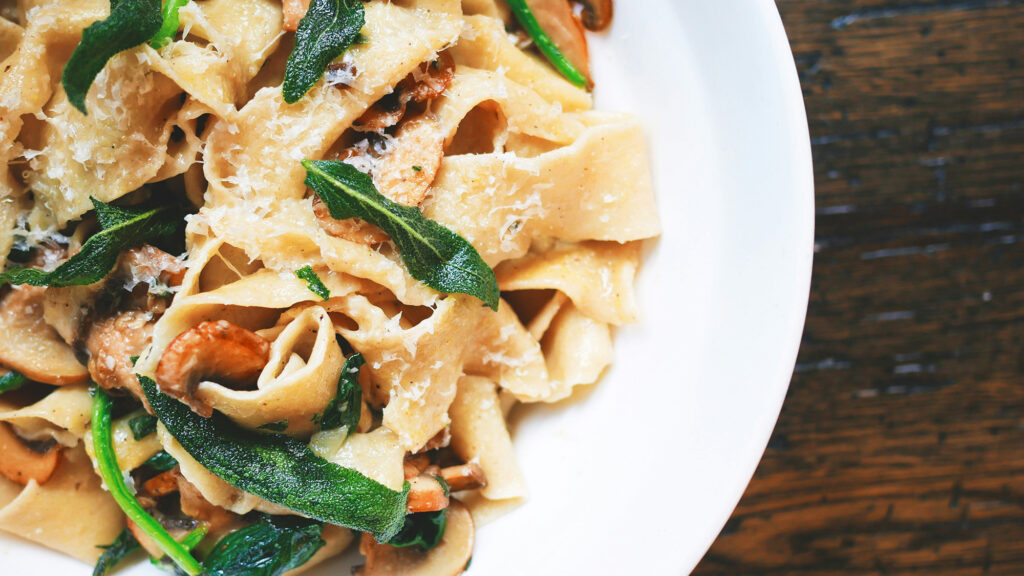Highlights
- Long-term dietary patterns, particularly the intake of protein, fat and carbohydrates, dictate the composition of the gut microbiota,
- A low intake of dietary fiber not only leads to reduced microbial diversity and short-chain fatty acids (SCFA) production but also shifts the gut microbial metabolism towards the utilization of less favourable substrates. Experiments have shown that a high-fat diet decreases the diversity of the gut microbiome. The effects of proteins on gut microbiota composition vary according to the protein type. There are several benefits of fermented foods in terms of health and disease prevention,
- Richness in microbial diversity has been seen in populations that eat a wide variety of foods.
Most food is essentially composed of protein, carbohydrate, fat, and trace elements like iron and minerals. Food is mainly broken down and absorbed in the gut and metabolized in the body to produce energy.
The diverse microbial community, known as the gut microbiota, is equipped with enzymes to break down food.
For example, a vegetable might contain complex carbohydrates. The complex carbohydrate is broken down into simpler carbohydrates (like glucose) by these microbes.
There is a constant interplay between the food that we eat and the microbes in the gut. In this blog, we will look at how our food affects our gut and the microbiota within it.
Long-term dietary patterns, particularly the intake of protein, fat and carbohydrates, dictate the composition of the gut microbiota.
Dietary fibres
Dietary administration of fibre alters the niche environment in the gut by providing substrates for microbial growth, allowing microbial species that can utilize these substrates to increase their populations.
The gut microbiome harbours 130 glycoside hydrolase, 22 polysaccharide lyase and 16 carbohydrate esterase families, which provide the microbiome flexibility to switch between different energy sources of fibres, depending on availability.
Dietary fibres are important energy sources for gut microbiota. Anaerobic bacteria under specific intestinal conditions activate their machinery, consisting of key enzymes and metabolic pathways, which can metabolize complex carbohydrates, thus leading to the production of metabolites such as short chain fatty acids (SCFAs).
SCFAs are organic products mainly composed of acetate, propionate and butyrate. SCFAs possess key roles in regulating human metabolism and the immune system.
A low intake of dietary fibre does not only lead to reduced microbial diversity and SCFA production but also shifts the gut microbial metabolism towards the utilization of less favourable substrates.
High-fat diet
Gut microbiome diversity is an important factor in gut health. Lesser the diversity, the more problematic it is for health. Experiments have shown that a high-fat diet decreases the diversity of the gut microbiome.
Studies have also shown that converting a low-sugar, low-fat diet to a high-sugar, high-fat diet caused a rapid decline in gut microbiome diversity. Further, a high-fat diet-induced reduction of diversity, leads to intestinal barrier alterations, or leaky gut.
A high omega-6/omega-3 PUFA ratio, predominant in the Western diet, has been related to an enhanced gut barrier permeability and metabolic endotoxemia through a gut-microbiota-driven mechanism.
Protein-rich diet
The effects of proteins on gut microbiota composition vary according to the protein type. The consumption of animal-based proteins—particularly red meat, of trimethylamine N-oxide (TMAO), a compound known for its proatherogenic (forming plaques in arteries) potential, plays a role in cardiovascular diseases.
Another study showed that high consumption of animal-based proteins might increase the risk of inflammatory bowel diseases (IBDs) through an accrued production of hydrogen sulfide (H2S) by sulfate-reducing bacteria.

Fermented foods
Fermented foods or beverages are made through enzymatic action in controlled microbial growth.
Historically, fermentation has been used in various foods, including meat, fish, dairy, vegetables, soybeans, legumes, cereals and fruit. The fermentation process involves microorganisms, nutritional ingredients and environmental conditions. All these combine to create various types of foods.
It has been used as a preservation method and is also used to enhance organoleptic properties (taste and texture).
Some foods such as olives are inedible without fermentation, which removes bitter phenolic compounds. There are several benefits of fermented foods in terms of health and disease prevention.
First, they have potentially probiotic microorganisms such as lactic acid bacteria. Most fermented products generally have at least 106 microbial cells per gram, with concentrations varying depending on the product’s region, age and time at which it is analyzed/consumed.
Second, fermentation-derived metabolites such as lactic acid bacteria (in dairy and non-dairy fermented foods) create bioactive peptides and polyamines that could help with cardiovascular, immune and metabolic health. Fermentation (in the form of lactic acid bacteria) might also convert some phenolic compounds (such as flavonoids) to biologically active metabolites.
Third, food components found in fermented foods, such as prebiotics and vitamins, may also yield health benefits.
Conclusion
Long-term consumption of a diet can lead to changes in the gut microbiome and it may have detrimental effects. Studies have now shown a rich diversity of microbes is essential for good health, especially metabolic health. Richness in microbial diversity has been seen in populations that eat a wide variety of food. Adding dietary fibres and fermented food to the diet is beneficial for health in the long run.
Disclaimer: The contents of this article are for general information and educational purposes only. It neither provides any medical advice nor intends to substitute professional medical opinion on the treatment, diagnosis, prevention or alleviation of any disease, disorder or disability. Always consult with your doctor or qualified healthcare professional about your health condition and/or concerns and before undertaking a new healthcare regimen including making any dietary or lifestyle changes.
References







